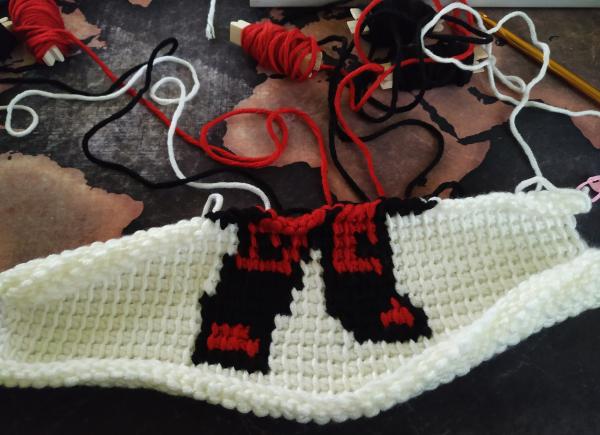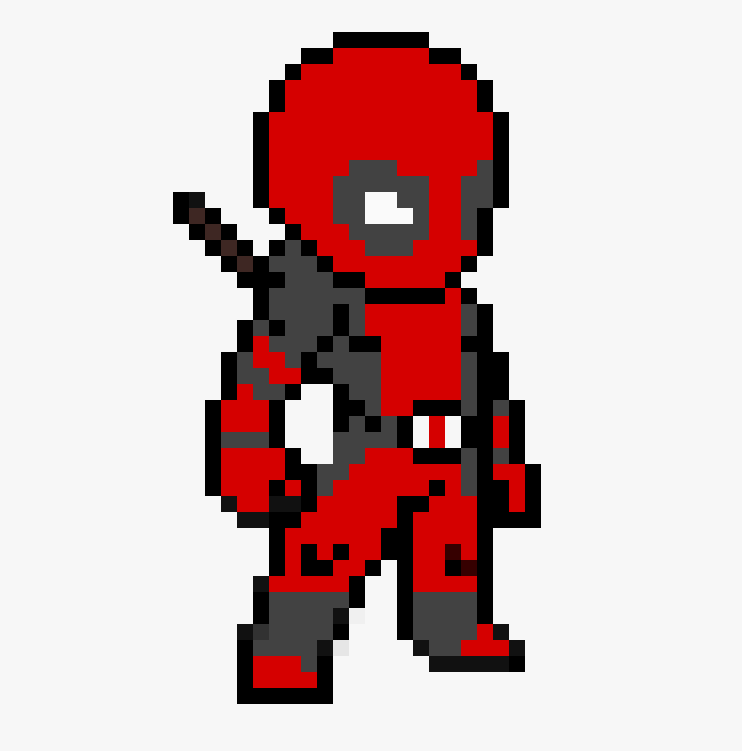I started learning tunisian crochet to make pixel art. And the time has come to test my ability.
I had this design chosen way before I knew tunisian crochet. I have no idea who is the author of this particular pixelart, so I cannot give them credit.
Anyway, I went to buy the yarn and returned with three colours despite the image having at least five. What can I say? Always ready to improvise.
Choosing the yarn took me a while, but in the end, I went with Kartopu No.1 because of the colours and weight. However, I am not sticking with this yarn brand for future projects. Don’t get me wrong, Kartopu worked up well; the result is wonderful, but No.1 sheds too much, and I was worried about the “washability” of the pillow - that is yet to be seen. Furthermore, two sellers told me there were issues with Kartopu regarding reliability.
I had the yarn - red, black and white - and I was ready to start, but I wasn’t sure how to work with a pixelart. At first, I opened the image in Photopea, resized it and got it ready, but marking finished pixels wasn’t exactly efficient.
I remembered someone from the crafty community mentioning StitchFiddle. I gave it a go, and it was a breeze from there. You can load your image and get it converted into a chart. The best part is that you can also track your progress; it will mark the row you are currently on. All for free.
Here is the chart in PDF if you feel like making your own pillow.
The beginning was fiddly as hell because of all the bobbins and the need to cross them when changing colours. That’s a technique I learned from Michele Smith’s video - trust me, the tutorial is brilliant for colour switching. Crossing them is vital because you get unsightly holes without anchoring the next colour to the previous one. I also learned that pulling too tightly will pull the stitches together too much, and they will no longer be square.



